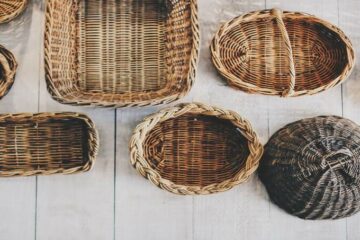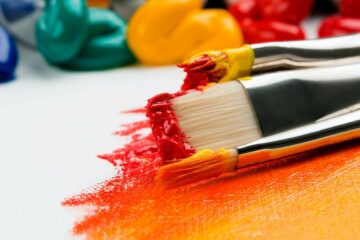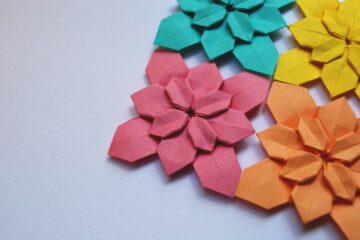In fabric painting, specific types of paints are applied to fabrics of different types. While any fabric can be painted, the tightly-woven natural fabrics are the easiest to paint. However, there are methods of painting that are not dependent on the type of fabric. It is necessary that the fabric be prepared before painting.
The fabric must be pre-washed so that it is free from starch and shrinkage. After washing, it must be dried and ironed. When this is done, it would be ready as a base material to be painted using fabric colours. Here, we’ve described some of the best techniques used in fabric painting:
1. Tie and dye
This is quite an interesting technique for painting fabrics. The fabric is twisted, folded, pleated, or crumpled and then wound around with a sturdy thread. An alternative for the thread would be a strong rubber band. Using paints with a watery consistency, certain areas are painted and left to dry.
The wound fabric is then opened with a particular pattern or design on it. Natural dyes can also be used instead of fabric colours in this technique.
2. Wet into wet
This technique involves merging and blending colours and shades in a watery consistency. Once dry, multiple applications can be painted without picking up the underlying colours. Lightweight fabrics are the most appropriate for this technique of painting. The biggest reason for this is that such fabrics allow liquid paints to spread rapidly and naturally.
3. Block printing
This is an old technique of painting and making impressions. In this technique, wooden blocks with letters, motifs, patterns or any other engravings are used. These wooden blocks are then dipped in fabric colours or natural dyes and pressed neatly on the fabric. Next, the borders of the fabric are printed. Block printing technique is used extensively in the textile industry for garments, upholstery, and other products.
4. Salt technique
In this technique, coarse salt or fine salt is used while painting. A particular design or pattern is painted on a piece of fabric using paint with a watery consistency. While still wet, salt is randomly sprinkled. Once the fabric dries, the excess salt is shaken off. Stains that are left by the salt create a unique design on the fabric.
5. Spray painting
One of the easiest techniques of fabric printing, spray painting involves the use of watercolours. In this technique, compressed paint is created by filling a can with fabric paint. Then, the paint is sprayed to sprinkle water colours on the fabric. Stencils can also be used in spray painting.
The stencil is placed appropriately on the fabric and the paint is sprayed on it from a distance. Then the stencil is carefully removed, thus creating a design almost effortlessly. This technique of fabric painting can be used to design T-shirts, curtains, cushion covers, and other items.
6. Sun painting
This is a very natural technique of painting using fabric paints. In this basic technique, the heat and light of the sun are used to get the final result. The fabric is painted and spread directly under the sun while still wet. Then the elements are placed aesthetically over it for creating the intended design.
The element can be a feather, flower, leaf, stencil, or motif. Once the fabric dries under the sun, the elements are removed. This leaves the painted fabric with impressions of the element with a faded or faint appearance.


